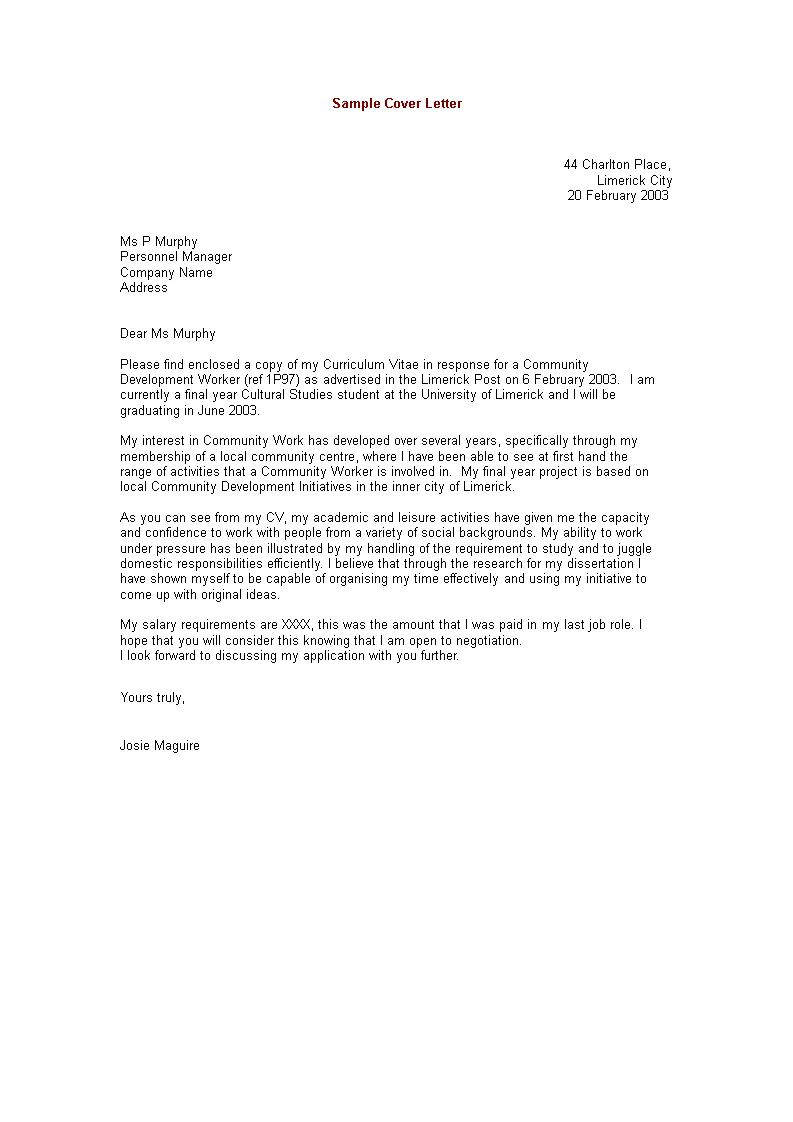Where to Put Salary Expectations in Cover Letter
Knowing where to put your salary expectations in a cover letter is crucial for making a positive impression. While it may seem like a minor detail, the placement of this information can significantly impact how a hiring manager perceives your application. This guide will walk you through the best practices, considering various scenarios, and offering advice on how to present your salary requirements professionally. A well-placed and thoughtfully worded salary statement demonstrates that you’ve considered the role, understand its value, and are serious about the opportunity. Conversely, an improperly placed or poorly phrased statement can raise red flags and potentially lead to your application being overlooked. This guide is designed to help you navigate this aspect of the job application process with confidence.
Why Include Salary Needs in Cover Letter
Including your salary expectations in a cover letter can streamline the hiring process and show that you’re a serious candidate. It helps hiring managers quickly assess whether your expectations align with the company’s budget, saving both parties time. By being upfront about your needs, you demonstrate transparency and professionalism. It also provides an opportunity to frame your expectations positively, emphasizing your value and demonstrating your understanding of the role’s requirements. Ultimately, providing this information, when appropriate, signals that you’re prepared to discuss compensation and are genuinely interested in the position. Failing to include it when requested, or when it’s strategically beneficial, may create uncertainty and could negatively impact your application.
When to Include Salary Requirements
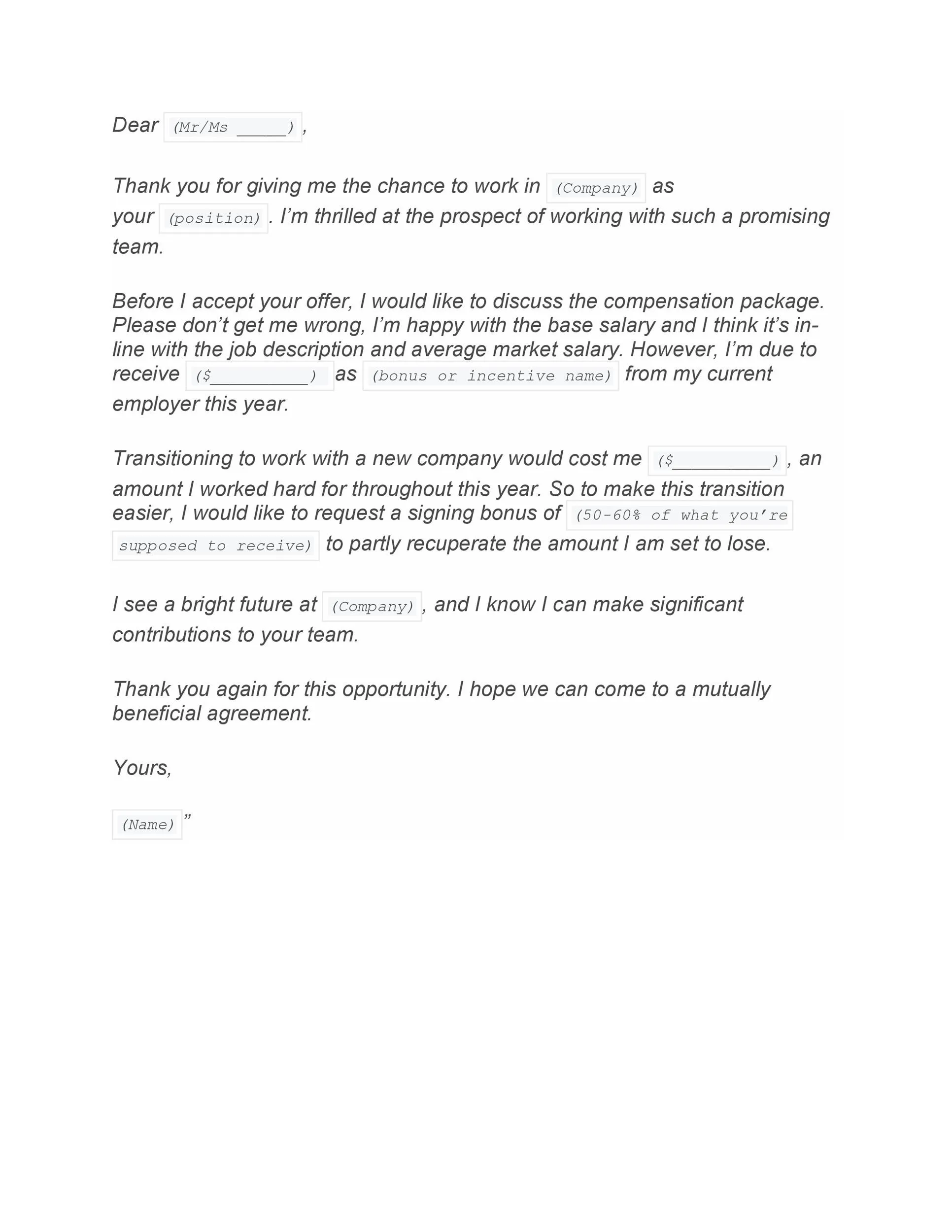
The decision of when and how to include salary requirements in your cover letter depends heavily on the job posting and the company’s culture. Generally, you should include this information if the job posting explicitly requests it. In such cases, omitting the information could disqualify your application. Additionally, consider including it if you’re applying through a recruiter or if you’re confident that your salary expectations align with the industry standards for the role. However, avoid including salary requirements if the job posting doesn’t ask for it, particularly in the initial application stages. In those cases, it’s often better to wait until you’ve progressed further in the interview process before discussing compensation. Tailoring your approach to each specific job opportunity is the best way to ensure your application is perceived positively.
In the Opening Paragraph
While less common, you can sometimes include your salary expectations in the opening paragraph, especially if the job posting specifically requests it. This approach ensures the information is immediately visible to the hiring manager. However, it’s essential to phrase it professionally and considerately. For instance, you might state something like, ‘I am seeking a position with a salary range of X to Y, commensurate with my experience and the responsibilities outlined in the job description.’ This approach shows confidence and transparency while allowing for negotiation. Ensure you have researched industry standards to justify your expectations. Including salary requirements in the opening paragraph is most suitable when the job posting explicitly asks for it or if the company is known for its straightforward approach to compensation.
In the Body Paragraph
The body paragraph of your cover letter offers a more flexible and often preferred location for mentioning salary expectations. Here, you can integrate your salary needs naturally within the context of your qualifications and experiences. This allows you to connect your desired salary with the value you bring to the role. For example, you might write, ‘Based on my experience in X and my proven ability to achieve Y, I am seeking a salary in the range of Z to W.’ This approach provides context and demonstrates that your expectations are based on your skills and the contributions you can make. This placement is particularly effective when highlighting specific achievements and linking them to the compensation you deserve. It’s a strategic way to frame your salary requirements.
In the Closing Paragraph
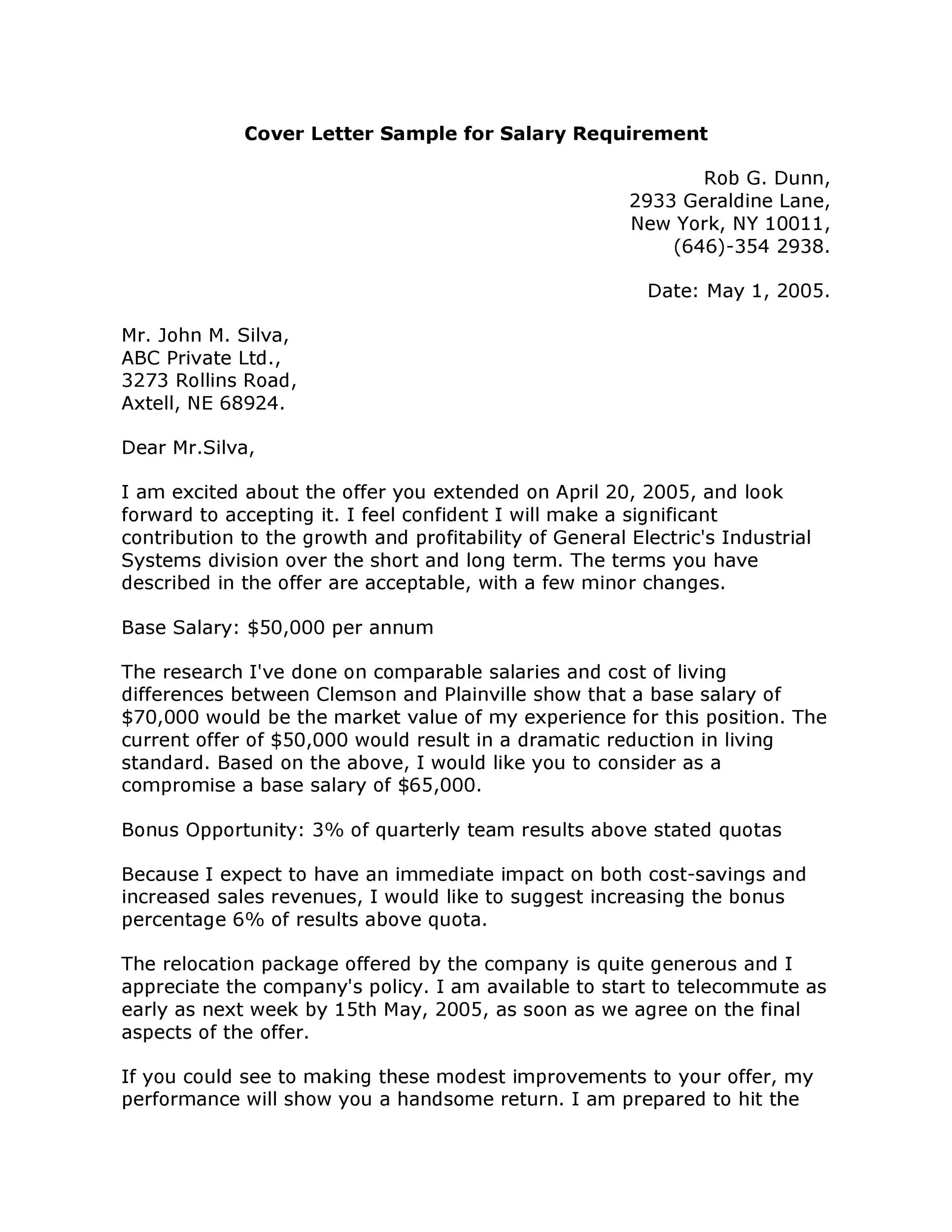
The closing paragraph is another viable location for including salary requirements, especially when you want to keep your letter concise and focused. In this section, you can directly state your salary expectations while expressing your enthusiasm for the role. A simple, direct approach can be very effective, such as, ‘I am seeking a salary in the range of X to Y and am excited about the opportunity to discuss how my skills and experience can benefit your team.’ This allows you to conclude your letter on a positive note, reiterating your interest and openness to further discussion. However, if the job posting does not explicitly request salary information, consider omitting it in the closing paragraph to avoid appearing overly focused on compensation too early in the application process.
How to Phrase Your Salary Expectations
How you phrase your salary expectations is crucial to how you are perceived by the hiring manager. It must be clear, professional, and adaptable. Avoid being overly specific or rigid, which could narrow your chances. Instead, focus on providing a range or using flexible language to show that you are open to negotiation. Your goal is to show that you have researched the industry standards and have a realistic understanding of your value while still maintaining a level of flexibility. The tone of your phrasing also matters; maintain a confident and positive tone, emphasizing your belief in the value you bring to the role and the organization. Using phrases that convey openness to discussion and negotiation can help you maintain a positive relationship with the potential employer.
Providing a Salary Range
Providing a salary range is often the most effective approach, as it allows for flexibility and shows that you have considered industry standards. By offering a range, you demonstrate that you are open to negotiation while still providing a clear indication of your expectations. Research the typical salary for the role and your level of experience, and then provide a range that reflects this. It is recommended that the spread between the lowest and highest figures not be too wide, as this could suggest a lack of clarity. For example, you might write, ‘I am targeting a salary in the range of $60,000 to $70,000.’ Providing a range shows you are reasonable and have a clear expectation of your worth.
Using the phrase ’negotiable’
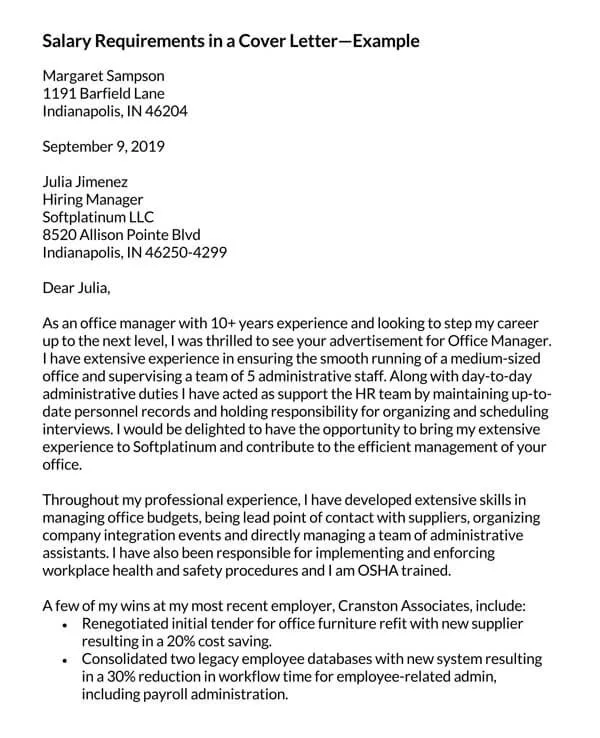
The word ’negotiable’ is a powerful way to signal flexibility while still addressing salary requirements. By including this term, you explicitly state that you’re open to discussing your compensation. This approach is particularly useful if you are unsure of the exact salary for the role or if the job posting is vague about compensation. You might state, ‘My salary expectations are in the range of X to Y, negotiable based on the specific responsibilities and overall compensation package.’ This demonstrates that you are willing to consider various factors, such as benefits and performance bonuses. This approach helps maintain a positive and collaborative tone while ensuring you’re both on the same page.
When Not to Include Salary Expectations
While including salary expectations is often beneficial, there are times when it is best to avoid doing so. It’s important to consider the context of each application and the specific requirements of the job posting. In some instances, providing this information too early in the process could inadvertently screen you out. Knowing when to remain silent on the matter is as important as knowing when to speak up.
When the Job Posting Doesn’t Ask
If the job posting doesn’t explicitly request salary information, it’s often best to omit it from your cover letter. This approach allows you to focus on your skills and qualifications without appearing overly concerned about compensation early in the application process. Waiting until later stages, like the interview, can allow you to gather more information about the role and the company’s compensation structure. By postponing the discussion, you can also avoid potentially underselling yourself or pricing yourself out of the running. If the job posting is silent on salary, it usually implies that the company will initiate the compensation discussion.
If You’re Unsure of Salary Ranges
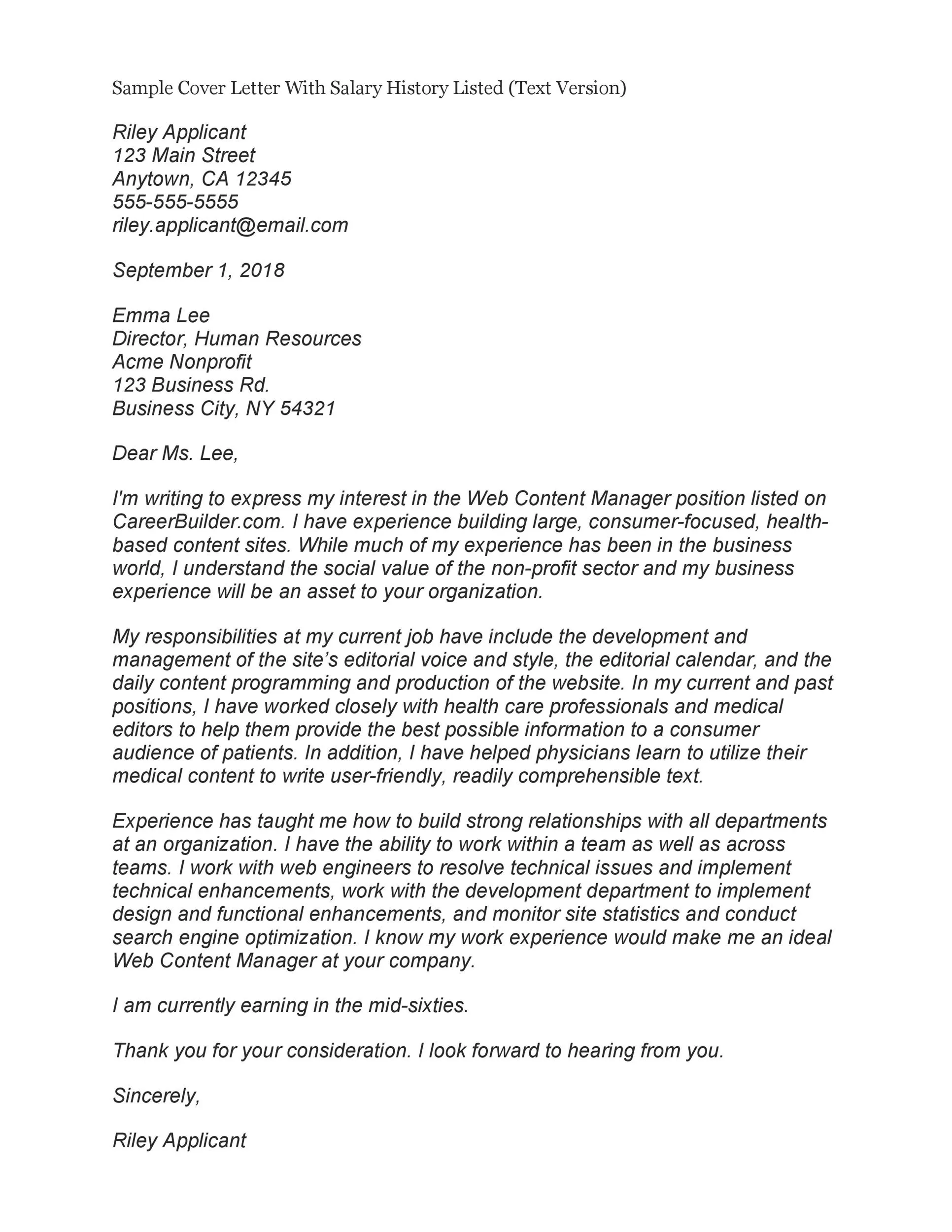
If you’re unsure of the typical salary ranges for the role or the industry, it’s best to avoid providing specific numbers. Doing so might lead to an inaccurate expectation that could be detrimental during negotiation. Instead, you can use phrases such as, ‘My salary expectations are competitive and commensurate with my experience,’ or ‘I am looking for a competitive salary and benefits package.’ This demonstrates your understanding of industry standards while avoiding making a premature commitment. It’s always better to be informed before stating your needs, so do some research on industry salary ranges before offering a number.
Best Practices for Salary Expectations
Adhering to best practices when including salary expectations in your cover letter ensures you present yourself professionally and increase your chances of success. This involves thorough research, strategic tailoring of your application, and meticulous proofreading. A thoughtful and well-executed approach can make a positive difference. These are key components for effectively handling the salary component of your cover letter.
Researching Salary Ranges
Conduct thorough research to determine appropriate salary ranges for the role and your level of experience. Utilize online resources such as Glassdoor, Salary.com, and Payscale. These platforms provide valuable insights into average salaries for similar positions in your location. Consider factors like experience, education, and specific skills that could impact your compensation. Additionally, research the company itself; some companies are known for offering higher or lower salaries than the industry average. Preparing yourself with this data will boost your confidence in the negotiation phase and allow you to justify your expectations accurately. Doing your homework is a crucial step to make an informed decision.
Tailoring to the Job
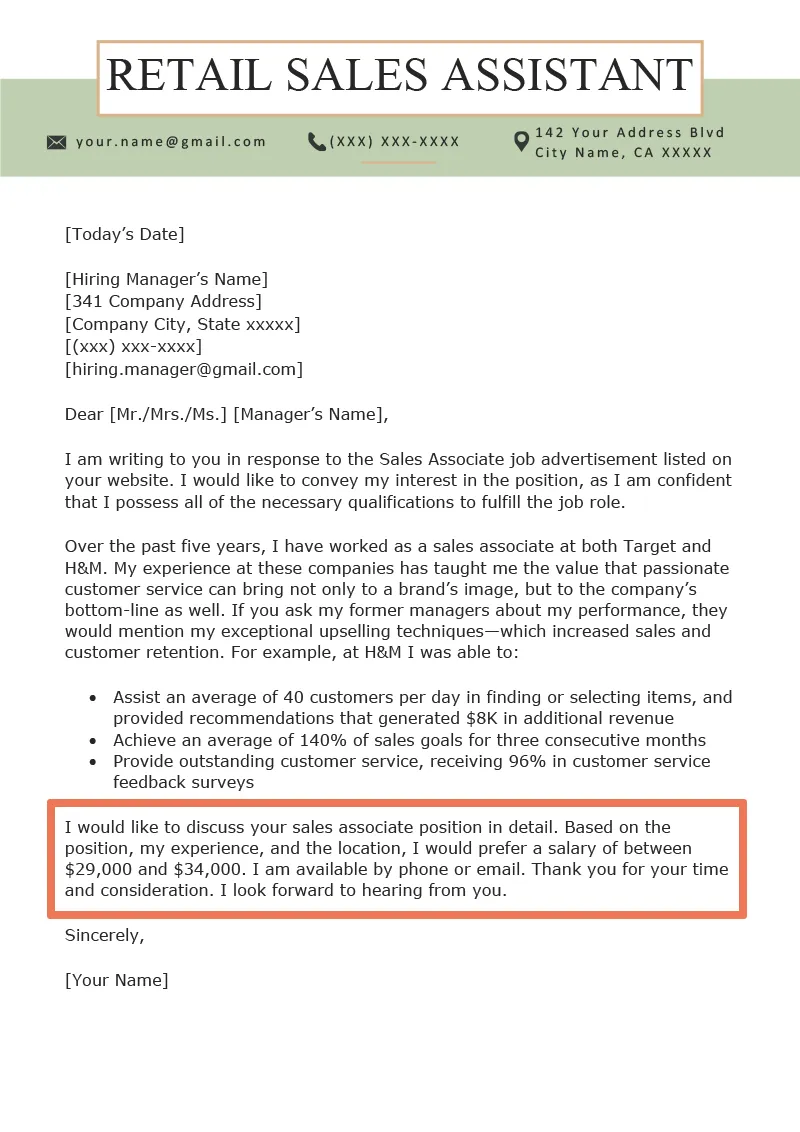
Always tailor your cover letter and your approach to salary expectations to match the specific job and company. Review the job description carefully and align your expectations with the responsibilities and requirements outlined. If the job posting explicitly mentions a salary range, use this information to inform your expectations, and adjust your salary expectation language accordingly. This shows that you’ve considered the role and are serious about applying. If the job description focuses on specific skills, emphasize how your expertise in these areas justifies your salary expectations. This demonstrates a strong alignment between your skills and the company’s needs, presenting you as a great fit.
Review and Proofread Your Letter
Always review and proofread your cover letter carefully before submitting it. Check for any grammatical errors, typos, or inconsistencies that could detract from your professionalism. Ensure that your salary expectations are clearly stated and align with the tone of your overall letter. Have a trusted friend or mentor review your letter for clarity, effectiveness, and overall impact. A well-written and polished cover letter indicates that you’ve taken the time to present your best self and are meticulous about details. A final review before submission is a simple yet significant step toward boosting your application.
Conclusion
Mastering the art of including salary expectations in your cover letter is a valuable skill in the job search process. By knowing where to put your salary requirements, when to include them, and how to phrase them, you increase your chances of making a positive impression. Remember to research industry standards, tailor your approach to the specific job, and always proofread your letter carefully. Following these guidelines will help you confidently navigate this aspect of the application process, positioning yourself as a well-prepared and informed candidate. Good luck with your job search!
